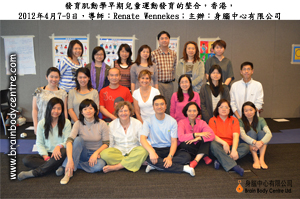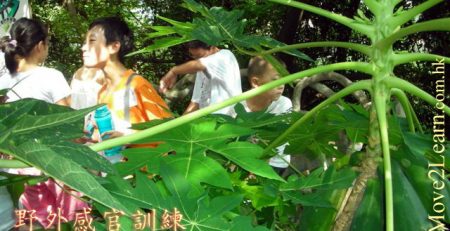The Child Heart of Curiousity and playfulness
Conrad Ho (Hong Kong, China)
Oct. 19, 2012
On 29th September, 2012, we planned to celebrate the Mid-Autumn Festival on board of a ship. That day during daytime, I took my two children to a playground at Tung Chung, a town near the airport. The playground was not big, at most the size of two basketball courts together, but it was filled with Yat and Sum’s childhood fond memories of curiosity and delights while exploring this world. Yat would turn 13 in a month while Sum was already 11, and had not been there for several years; they had probably forgotten about the place. However, once I suggested visiting the playground, they both jumped up and eagerly agreed. I thought it still held its charm.
At that time, Yat was 6 and Sum was 4. In other playgrounds, the play sets were for climbing or jumping, typically including a rope ladder, a balancing beam, or a monkey bar; the standardized equipment did little to encourage children’s imagination, and they only spent their energy chasing each other. The jungle gym at this Tung Chung playground was a rugby-ball-shaped structure 2.5-meter high, and in the hollow inside were steel bars bent to look like chairs and a control center. It was a totally different story! They would gather other children, and pretended they were astronauts attacked by aliens as they made a landing on an alien planet, or that there were aliens invading Earth, or they were on a road-trip in a pumpkin carriage and they met friendly natives, or they were spies hidden in a car eavesdropping, or that they were mad scientists conducting mysterious experiments in a secret lab… and so on.
Furthermore, the designs of the other devices could also be considered quite innovative for that time. For example, a seesaw was usually a long board that allowed a person to sit at each end and to simply bounce up and down. Here, the seesaw consisted of 4 seats on a cross-shaped concave baseboard, with the middle set on a giant spring. Not only were there more possible ways to bounce, but with 4 people playing, many, many more variations would appear! Another example was the merry-go-round, which was usually a circular platform with several concentric bars; children played by running around and rotating it, or jumping on and off it. Here, the merry-go-round was for one person only. It was a slightly tilted steel column about 1.5m high, with a heart-shaped handle on the top, and two stepping boards on either side near the ground at different heights. Therefore, the plane of rotation was not level but slightly tilted, like the rotating Earth, and required the children to have superb balancing ability to stay on it; the handle on top could be turned to increase or decrease the speed of rotation.
However, my children’s most favorite equipment there was several voice-recorders encased in various shapes of about 1 metre high: one looked like a brightly-colored mushroom, one a small tree, another a squatting frog with its mouth open, etc. Children could turn on the recorder by pressing a button, then say something into the receiver; after a few seconds, the machine would repeat their words in warped sounds and twisted tones for about 3 times. It would then stop and the children could say something else, though some children preferred to say the same sentences over and over again. Back in the days, Yat and Sum could spend over an hour playing with just this.
When we arrived at the playground on that day before the Mid-Autumn Festival, I told them they could only play for 70 minutes. Both children protested at the same time, “How could that be enough!” Yet, there was no other way as our time was limited. After that, I went into the mall at the Tung Chung town center. It came as a surprise to me that, no sooner had I casually browsed through two or three shops and had only spent about 10 minutes, than my cell phone rang. It turned out the two children had run into the playground joyfully, only to find out quickly that the equipment they had found fun and interesting in the past were now boring. Yat also realized that, because of the size of his body, it was hard for him to play in those devices any more.
That night on the ship, I looked up at the moon and thought about the playground, gaining some insights in my heart. My children had grown up, but they did not know yet, and they still viewed this world through the lenses of their past memory. I shared this experience with my wife Amy Choi; she thought about it a bit, and said, “I’m the same.” That is true: adults also tend to see the current world with old eyes. When will we learn our lesson? Only when Yat and Sum revisited the Tung Chung playground again could they discover that the place had accomplished its mission and fulfilled its function in their process of growing up. As Dr. Carla Hannaford said in her book “Awakening the Child Heart”: all we have to do is to re-experience the event and re-enjoy the process with a curious and playful heart and a pair of fresh eyes of a child. I think, one of the meanings of “being present” is precisely this.











